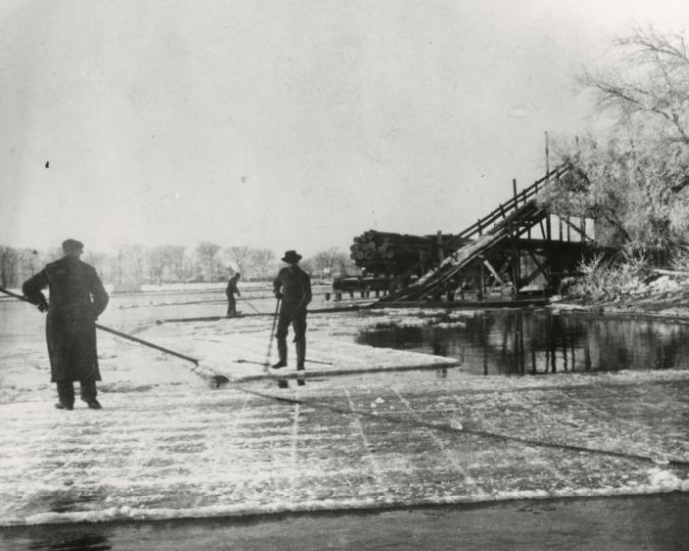
By Kris Leonhardt
Editor-in-chief
GREEN BAY – Today, most families have refrigerators in their homes capable of generating ice; but, back in the early 1900s, the area was dependent on the Fox River and the bay of Green Bay to help generate ice to keep foods sustainable.
The ice trade once counted on a cold January for a good harvest and warm weather was detrimental to the limited time window they had in producing it.
The depth of the ice was heralded to the public and huge harvests were celebrated.
A January 1907 edition of the Press-Gazette announced the first permit issued by the commissioner of health that year stating, “The first firm to cut is Miller & Rasmussen. The company began operations yesterday cutting for the Sisters of St. Vincent Hospital on a private contract to fill the storage house of the hospital with enough ice to supply the wants of the patients for a year.
“With the start on the annual harvest made, it is probable that ice cutting will continue uninterrupted until the crop of dealers and private users is complete.”
The ice wasn’t quite thick enough for ideal harvesting — at 12 inches thick — but was expected to be at 16 inches within a week.
The ice needed to be just thick enough to support the workers and horses in order to harvest, but ideally at 18 inches.
A warm winter cold garner a poor harvest unable to support the community through the coming year.
A lucrative 16,000-17,000 cords of ice were expected to be harvested in ideal conditions.
The following year saw the ice at two feet thick after three weeks of harvesting.
Later years reported anywhere from eight inches to two feet in January.
On the years that harvest totals were low, ice was shipped in from Waupaca and price increases hit local households.
To harvest, local companies scraped off the ice and a grid was cut in the ice using horses pulling a scoring tool.
The ice was then cut all of the way through and floated down the river to a chute to be carried off the ice.
The ice was then transported from the shore to insulated sheds, where they remained until block chunks were delivered to homes in the summer, to keep fish, meat and dairy products fresh in the family “ice box.”
In the late 1920s, mechanical ice-making machines came into use and local companies started to rely on artificial ice.
Coupled with a diminished quality in the once crystal-clear river water, the ice industry started to die by the early 1930s, later giving way to the refrigerator.
